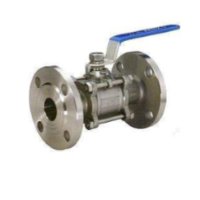Valvesonly Europe
posted a blog.
What is a Safety Valve?
Safety valves are valves that act as a ‘fail-safe’. They are a mechanical device designed to automatically relief excessive pressure from a system during operations. Excessive pressure can sometimes leads to operational failures, hazards and can poses danger to the human life. To protect the system from over pressure hazards, Safety valves are used to ensure excess pressure is removed and normal condition is reset.
Working principle of safety valve
Maintaining a balance between the force exerted by the pressure inside a system and the force exerted by a spring/weight mechanism. When the pressure exceeds the threshold limit, which is predetermined, the valve opens and allows the excess fluid to escape, releasing the pressure. When the pressure returns to the normal or safe level, the valve will close. The discharge openings of the valve will be specifically designed to handle a large amount of outflow, to prevent further pressure increase within the system. Even though the discharge openings will be visible, it shouldn’t be a threat of danger to personnel who observe it.
Breakdown of operations:
1. Set pressure: this is the predetermined pressure at which the safety valve opens to release any excess pressure from the system. So, it is very important to set the pressure value accurately and ensure the overall safety of the systems as well as the proper functioning of the system.
2. Blowdown: it is the difference between the set pressure and the pressure at which the valve reseats and closes soon after releasing the exceeded pressures. To ensure that the valve does not close or open frequently it is important to set the blowdown settings accurately, eventually protecting the valve from wear and improving its lifespan.
3. Lift: it is the distance between the valve disc from the seat when the valve opens and the valve moves away from the seat. This space allows the flow of fluid to relieve the excess pressure quickly from the system.
4. Reseating: when the system drops below the blowdown pressure, the valve closes to restore normal operation. This mechanism should be tight-proof to prevent any leakages.
Main components
• Valve body: this is where all the internal components are housed and act as a passage for the fluid
• Valve seat: the sealing surface where the valve closes for the prevention of the flow of fluids.
• The disc or poppet
• Stem: the moving components of the valve, which opens or closes the valve seat, thereby allowing the passage or blockage to the fluid flow.
• Spring or weight mechanism: this is the component that exerts a force on the valve disc, and keeps it closed until the pressure exceeds the threshold limit.
• Adjustment mechanism/ring: it is useful to set up the system with a desired pressure at which the valve opens
Types of safety valves
Safety valves come in several types, each suited for specific applications and pressure conditions. The main types include:
1. Steam safety valves
It is a special type of valve that is used to control the flow and pressure level of hot water vapor or steam vapor. It is used in pipes which carry hot water vapor or steam. They are an important part ort of the steam systems, which are particularly constructed for protecting pressure vessels, boilers, and other equipment from high-pressure buildup.
2. Pilot operated safety valves
They use system pressure to control the opening and closing of the main valve. A pilot valve can sense the system pressure and can also control the main valve operation. The valve remains closed under normal conditions and opens whenever overpressure is detected. It offers definite control of the set pressure. Provides stable operations and also functions in fluctuating pressure conditions.
3. Balanced Bellows Safety Valves
Specially designed to handle backpressure conditions. They utilize bellows to balance the pressure on the valve disc and ensure consistent performance even if there is back pressure in the system. It provides resistance towards back pressures and is effective in such systems where back pressure can disrupt the valve operation. The bellows can protect the valve stem against any kind of corrosive fluids.
Commercial Applications
1. Oil and gas industries: for the protection of pipelines, pressure vessels, and any processing types of equipment from overpressure conditions. The drilling, refining, and distribution process can be safely operated using safety valves.
2. Chemical processing: safety valves are crucial in chemical processing industries because maintenance of precise pressure control is important for efficient operations. Reactors, storage tanks, and pipelines can be protected from overpressure using these valves.
3. Power generation /plants: used to protect boilers, steam turbines, and any other high-pressure types of equipment. Prevents potential explosions by releasing excessive pressure.
4. Manufacturing: useful in hydraulic systems, air compressors, industrial types of machinery, etc. ensures safety and reliability.
5. Water and wastewater treatments: safety valves are used in this industry to protect pumps, pipelines, and pressure vessels from overpressure conditions.
Conclusion
Providing essential protection against over-pressure conditions, Safety valves ensure the safety of the overall equipment, industries, and personnel. Understanding the working principle, types, and its various applications can aid in better usage of safety valves in various industries. To reduce downtime, ensure longevity and reliability, or prevent any hazard, it is wise to choose proper and industry-standard safety valves. For the best industry-quality Safety valves, check Valvesonly Europe!
Be the first person to like this.

